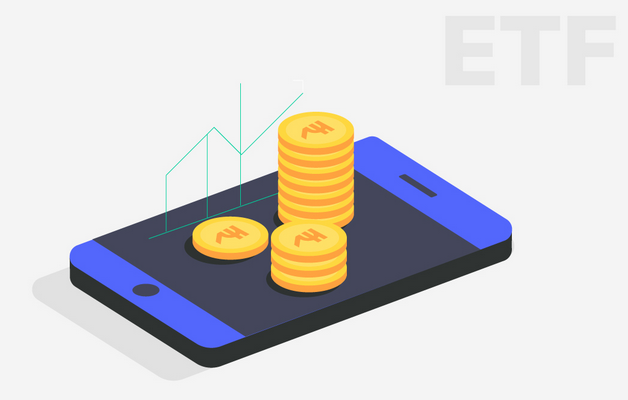Introduction
Investing in Exchange-Traded Funds (ETFs) is an excellent way for individuals to diversify their portfolios and gain exposure to a basket of stocks and cryptocurrencies without the need for extensive research or picking individual assets. Whether you are a seasoned investor or just starting, ETFs offer simplicity and ease of access to various markets, including traditional stocks and emerging cryptocurrencies. In this article, we will explore the basics of investing in ETFs and cryptocurrencies and how it can be done effectively. Take your trading skills to the next level by exploring the Home page and tapping into a range of powerful features.
Understanding ETFs: The Smart Way to Invest
An ETF is a type of investment fund that trades on stock exchanges, much like individual stocks. It is designed to track the performance of an underlying index, such as the S&P 500 or the Nasdaq 100. ETFs can also be sector-specific, tracking industries like technology, healthcare, or energy. This diversification of assets helps reduce risk compared to investing in a single company’s stock.
Choosing the Right ETFs: Identifying Your Investment Goals
Before investing in ETFs, it is crucial to identify your investment goals and risk tolerance. Are you looking for long-term growth, income, or a combination of both? ETFs cater to various investment objectives, and understanding your needs will help you select the right funds.
Researching ETFs: Digging Deeper into the Details
With thousands of ETFs available in the market, researching and comparing them is essential. Investors should evaluate the fund’s expense ratio, historical performance, assets under management (AUM), and the index it tracks. Reputable financial websites and platforms offer comprehensive information on ETFs, making it easier for investors to make informed decisions.
Brokerage Account Setup: The First Step to Investing
To invest in ETFs, one needs a brokerage account. Many online brokerage platforms offer user-friendly interfaces, making the account setup process quick and easy. Investors can fund their accounts using bank transfers or other accepted payment methods.
Dollar-Cost Averaging: A Strategy to Consider
Dollar-cost averaging is a popular strategy among ETF investors. Instead of investing a lump sum, investors contribute a fixed amount regularly, such as monthly or quarterly, into their chosen ETFs. This approach helps mitigate the impact of market volatility and can result in a lower average cost per share over time.
Embracing the Power of Compounding: Patience Pays Off
The power of compounding can significantly enhance an ETF investor’s returns. Reinvesting dividends and capital gains earned from the ETF back into the fund allows investors to generate earnings on their previous earnings. Over time, this can lead to substantial growth in the investment.
Avoiding Emotional Investing: Stay the Course
Emotional investing can lead to hasty decisions, which may not be in the best interest of long-term financial goals. It is essential to stay disciplined and avoid making impulsive changes to the investment strategy based on short-term market fluctuations. Diversified ETFs are designed for stability, and sticking to a well-thought-out plan is key.
Monitoring and Rebalancing: Keeping Your Portfolio in Check
While ETFs provide diversification, it’s essential to monitor your portfolio periodically and rebalance if necessary. Over time, certain assets may outperform others, altering the original asset allocation. Rebalancing ensures that the portfolio remains aligned with your investment goals and risk tolerance.
Tax Efficiency: Making the Most of Your Investments
ETFs are known for their tax efficiency compared to mutual funds. Since ETFs trade on exchanges like stocks, they have fewer taxable events, resulting in potentially lower capital gains taxes. Understanding the tax implications of your investments can help maximize your returns.
Expanding Horizons: Exploring International ETFs
Investors can expand their horizons by exploring international ETFs. These funds provide exposure to overseas markets, allowing investors to diversify globally. International ETFs can be particularly appealing during times of economic shifts or when domestic markets may face challenges.
Conclusion
In conclusion, investing in ETFs offers a simple yet effective way to invest in a basket of stocks and achieve diversification. By understanding your investment goals, researching ETFs thoroughly, and staying disciplined in your approach, you can build a robust portfolio that aligns with your financial objectives. Remember, patience and a long-term outlook are the keys to successful ETF investing. Online trading platforms provide a convenient and user-friendly way to access various ETFs and kickstart your journey into the world of diversified investing.







![Wise Debit Card Review [2024] Wise Debit Card Review [2024]](https://www.techpreview.org/wp-content/uploads/2024/07/Wells-Fargo-Card-International-3-238x178.png)

![Wells Fargo Card International and Its Fees [2024] Wells Fargo Card International](https://www.techpreview.org/wp-content/uploads/2024/07/Wells-Fargo-Card-International-238x178.png)








